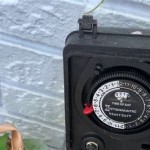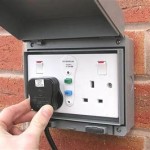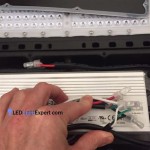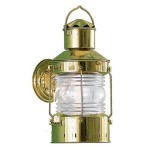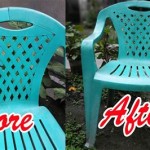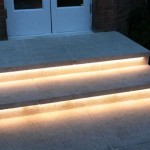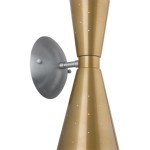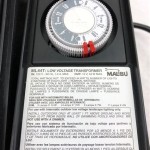```html
Outdoor Deck Lighting Systems: Illumination and Ambiance
Outdoor deck lighting systems provide essential safety and significantly enhance the aesthetic appeal of outdoor living spaces. Selecting the appropriate lighting requires consideration of various factors, including the deck's size, intended usage, architectural style, and desired ambiance. Effective deck lighting integrates functionality with design, creating a welcoming and secure environment for relaxation, entertainment, and everyday use.
The primary purpose of deck lighting is to improve visibility after sunset, minimizing the risk of accidents and falls. Well-lit decks encourage greater use of outdoor spaces during evening hours, extending the usability of the home. Beyond safety, thoughtfully chosen lighting can transform a deck into a focal point, highlighting architectural features, landscaping, and decorative elements. The type of lighting selected should be chosen according to the overall landscape design, ensuring any lighting fixtures will complement surrounding elements.
Types of Outdoor Deck Lighting
A diverse range of lighting options are available for decks, each offering unique advantages in terms of aesthetics, energy efficiency, and installation complexity. Understanding the characteristics of different lighting types is crucial for making informed decisions that align with specific requirements and preferences.
String Lights: String lights are a popular choice for creating a festive and inviting atmosphere. These lights typically consist of a series of small bulbs connected by a flexible wire. They are relatively easy to install, often requiring only simple hooks or fasteners. String lights are available in various styles, including traditional incandescent bulbs, energy-efficient LEDs, and decorative options with unique shapes and colors. Although they provide ambient lighting, string lights may not offer sufficient illumination for tasks requiring focused light.
Post Cap Lights: Post cap lights are designed to replace or attach to existing deck post caps, providing a seamless and integrated lighting solution. They offer a clean and unobtrusive appearance, blending with the deck's structure. Post cap lights are available in various materials, including metal, wood, and composite, to match the deck's overall design. These lights are typically low-voltage LEDs, providing energy-efficient illumination and long-lasting performance. They are particularly effective for delineating the perimeter of the deck and enhancing safety.
Recessed Deck Lights: Recessed deck lights are installed flush with the deck surface, creating a sleek and modern look. These lights are typically small, low-voltage LEDs that provide subtle, directional illumination. Recessed deck lights are ideal for highlighting specific areas of the deck, such as steps, pathways, or seating areas. Installation requires careful planning and execution to ensure proper wiring and waterproofing. The low profile of these lights minimizes obstruction and allows for easy maintenance.
Rail Lights: Rail lights are designed to attach to the deck railing, providing illumination along the perimeter of the deck. These lights can be mounted on the top or bottom of the railing, depending on the desired effect. Rail lights are available in various styles, including linear LED strips, individual spotlights, and decorative fixtures. They are effective for enhancing safety by illuminating the edges of the deck and providing ambient lighting for walkways. Proper installation is crucial to ensure secure attachment and weather resistance.
Spotlights and Floodlights: Spotlights and floodlights offer more focused and powerful illumination, suitable for highlighting specific features of the deck or surrounding landscape. Spotlights provide a narrow beam of light, ideal for accentuating architectural details, trees, or sculptures. Floodlights provide a wider beam of light, suitable for illuminating larger areas, such as patios or gardens. These lights are typically mounted on poles or walls, allowing for flexible placement and adjustable direction. Consider the intensity and color temperature of the light to achieve the desired effect.
Step Lights: Step lights are essential for ensuring safety on decks with stairs or multiple levels. These lights are typically small, low-voltage LEDs that are installed in the risers or treads of the steps. Step lights provide subtle illumination that guides foot traffic and minimizes the risk of falls. They are available in various styles, including recessed fixtures, surface-mounted fixtures, and integrated lighting systems. Proper spacing and installation are crucial to ensure adequate illumination and prevent glare.
Solar Lights: Solar lights harness energy from the sun to power their illumination, offering an environmentally friendly and cost-effective lighting solution. These lights typically consist of a photovoltaic panel, a rechargeable battery, and an LED bulb. Solar lights are easy to install, requiring no wiring or electrical connections. They are available in various styles, including path lights, spotlights, and decorative fixtures. While solar lights offer convenience and sustainability, their performance may be affected by weather conditions and the availability of sunlight. Consider the battery capacity and light output when selecting solar lights.
Factors to Consider when Choosing Deck Lighting
Selecting the appropriate deck lighting system involves careful consideration of several factors to ensure optimal performance, aesthetics, and safety. A comprehensive assessment of the deck's design, intended usage, and environmental conditions is essential for making informed decisions.
Brightness and Color Temperature: The brightness of the lighting should be appropriate for the intended use of the deck. Areas used for dining or reading may require brighter illumination, while areas used for relaxation or conversation may benefit from softer, more ambient lighting. Color temperature refers to the warmth or coolness of the light, measured in Kelvin (K). Warmer light (2700K-3000K) creates a cozy and inviting atmosphere, while cooler light (4000K-5000K) provides brighter and more energizing illumination. A proper balance between brightness and color temperature is helpful in creating a nice and usable space.
Energy Efficiency: Choosing energy-efficient lighting options can significantly reduce electricity consumption and lower energy bills. LED lights are significantly more efficient than traditional incandescent bulbs, using up to 75% less energy and lasting significantly longer. Look for lights with an Energy Star rating to ensure optimal energy efficiency. Consider the long-term cost savings when evaluating different lighting options.
Weather Resistance: Outdoor deck lighting must be able to withstand exposure to various weather conditions, including rain, snow, sun, and wind. Look for lights with a high Ingress Protection (IP) rating, which indicates the level of protection against dust and water. Lights with an IP rating of IP65 or higher are typically suitable for outdoor use. Consider the materials used in the construction of the lights, opting for durable and weather-resistant options such as stainless steel, aluminum, or composite materials.
Installation and Maintenance: The ease of installation and maintenance should be considered when selecting deck lighting. Some lighting systems, such as string lights and solar lights, are relatively easy to install, requiring minimal tools or expertise. Other lighting systems, such as recessed deck lights and rail lights, may require professional installation. Consider the complexity of the installation process and the availability of qualified installers. Regular maintenance, such as cleaning and bulb replacement, is essential for ensuring optimal performance and longevity. Choose lighting systems that are easy to access and maintain.
Style and Design: The style and design of the lighting should complement the overall aesthetic of the deck and surrounding landscape. Consider the architectural style of the home and the existing design elements of the deck, such as the railing, decking material, and furniture. Choose lighting fixtures that blend seamlessly with the deck's design and enhance its visual appeal. Experiment with different lighting techniques, such as uplighting, downlighting, and accent lighting, to create a unique and personalized lighting scheme.
Installation Guidelines for Outdoor Deck Lighting
Proper installation is crucial for ensuring the safety, performance, and longevity of outdoor deck lighting systems. Adhering to manufacturer's instructions, electrical codes, and best practices is essential for a successful installation. If unsure, consult with a qualified electrician.
Planning and Preparation: Before beginning the installation process, carefully plan the layout of the lighting system, taking into account the placement of lights, wiring routes, and power sources. Obtain all necessary permits and approvals from local authorities. Gather all tools and materials required for the installation, including wiring, connectors, transformers, and mounting hardware. Ensure that the power source is properly grounded and protected by a ground fault circuit interrupter (GFCI).
Wiring and Connections: Use only approved outdoor-rated wiring and connectors for all electrical connections. Follow all applicable electrical codes and regulations. Ensure that all connections are secure and waterproof to prevent corrosion and electrical hazards. Use a low-voltage transformer to reduce the voltage of the power supply to a safe level. Protect wiring from damage by routing it through conduit or burying it underground.
Mounting and Securing: Securely mount all lighting fixtures to the deck structure using appropriate hardware. Ensure that the fixtures are level and properly aligned. Protect the fixtures from damage by choosing locations that are not exposed to excessive foot traffic or weather conditions. Use weather-resistant materials for mounting hardware to prevent corrosion. Consider the weight and size of the fixtures when selecting mounting locations.
Testing and Inspection: After completing the installation, thoroughly test the lighting system to ensure that all lights are functioning properly. Inspect all wiring connections and mounting hardware to ensure that they are secure and waterproof. Verify that the power source is properly grounded and protected by a GFCI. If any problems are detected, troubleshoot the system and correct any issues before using the deck.
Safety Precautions: Always disconnect the power supply before working on any electrical components. Wear appropriate personal protective equipment (PPE), such as gloves and safety glasses. Use extreme caution when working with electricity, especially in wet or damp conditions. If unsure about any aspect of the installation process, consult with a qualified electrician.
By understanding the various types of outdoor deck lighting systems, considering the relevant factors, and following proper installation guidelines, homeowners can create a safe, functional, and aesthetically pleasing outdoor living space.
```
8 Best Outdoor Deck Lighting Ideas To Transform Your Home

8 Best Outdoor Deck Lighting Ideas To Transform Your Home

Deck Lighting Ideas Landscaping Network

12 Ideas For Lighting Up Your Deck Family Handyman

12 Ideas For Lighting Up Your Deck Family Handyman

11 Deck Lighting Ideas For Illuminating Your Outdoor Space Bob Vila

Led Decking Lights Low Voltage Marine Grade Deck Lighting

Subtle Outdoor Deck Railing Lighting Ideas

Deck Railing Lighting Ideas Decksdirect

19 Stylish Outdoor Lighting Ideas The Best Patio
Related Posts
